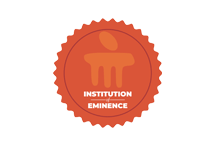Clinical and structural outcomes after arthroscopic repair of medium-to massive-sized delaminated and nondelaminated rotator cuff tears
Document Type
Article
Publication Title
Indian Journal of Orthopaedics
Abstract
Introduction: Current evidence is controversial about the outcomes after the repair of the delaminated versus nondelaminated rotator cuff tears. The objective of this study was to evaluate the factors affecting delamination of the cuff and clinical and structural outcomes after en masse arthroscopic repair of delaminated versus nondelaminated cuff of varying sizes. Materials and Methods: A total of 233 patients with full-thickness posterosuperior cuff tears were divided in two groups: Group 1: Delaminated tears (n = 131) and Group 2: Nondelaminated tears (n = 102) of medium, large, and massive sizes. Both groups were evaluated by clinical scores (Constant-Murley [CM], American shoulder and elbow score [ASES]) and ultrasonography (USG), at a minimum followup of 2 years. Results: The mean followup was 45.47 months. There was a weak but statistically significant linear correlation (P = 0.02) between the increasing size of tear and delamination, whereas increasing age and duration of symptoms did not correlate with increasing tendency of delamination. Final followup USG analysis revealed that there was no significant difference (P = 0.55) between healing rates of Group 1 and Group 2. Further taking various tear sizes into account, USG revealed no significant difference between the healing rates of two groups. The mean overall final postoperative CM and ASES scores of two groups did not show any significant difference (CM; P = 0.36, ASES; P = 0.4). However, the clinical outcome was significantly better in the completely healed group as compared to partially healed or retear group. Conclusions: A weak linear correlation between delamination and increasing size of the tear was noted. Although overall structural and clinical outcome is no different between two groups, the clinical outcomes of completely healed tear are better than partially healed ones.
First Page
384
Last Page
391
DOI
10.4103/ortho.IJOrtho_440_18
Publication Date
5-1-2019
Recommended Citation
Pandey, Vivek; Joseph, C.; Mathai, Naveen; and Acharya, Kiran, "Clinical and structural outcomes after arthroscopic repair of medium-to massive-sized delaminated and nondelaminated rotator cuff tears" (2019). Open Access archive. 710.
https://impressions.manipal.edu/open-access-archive/710


